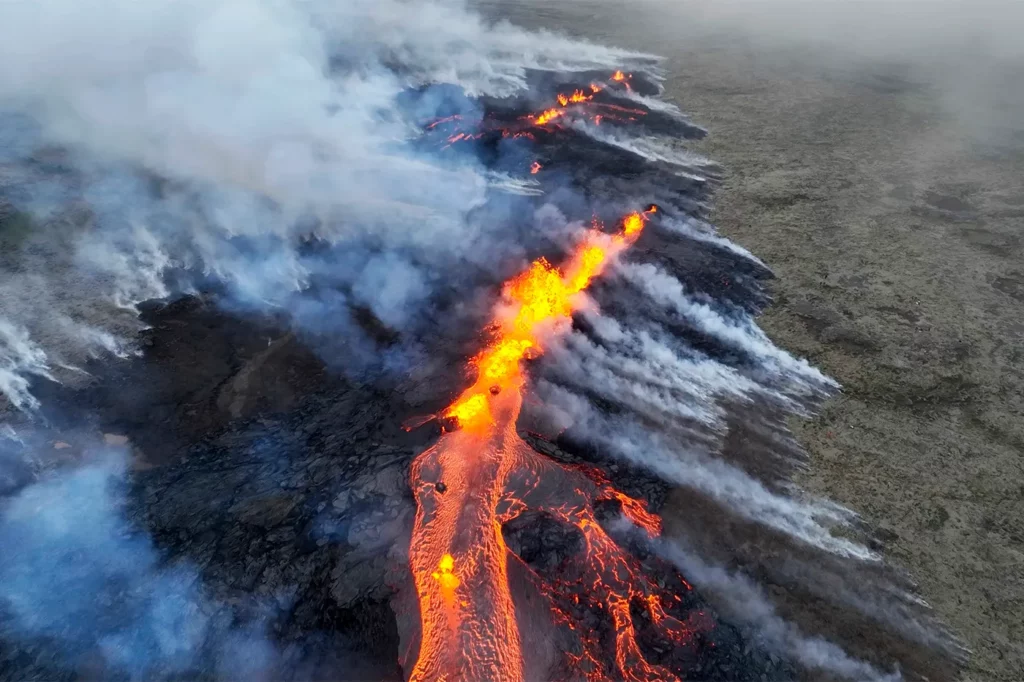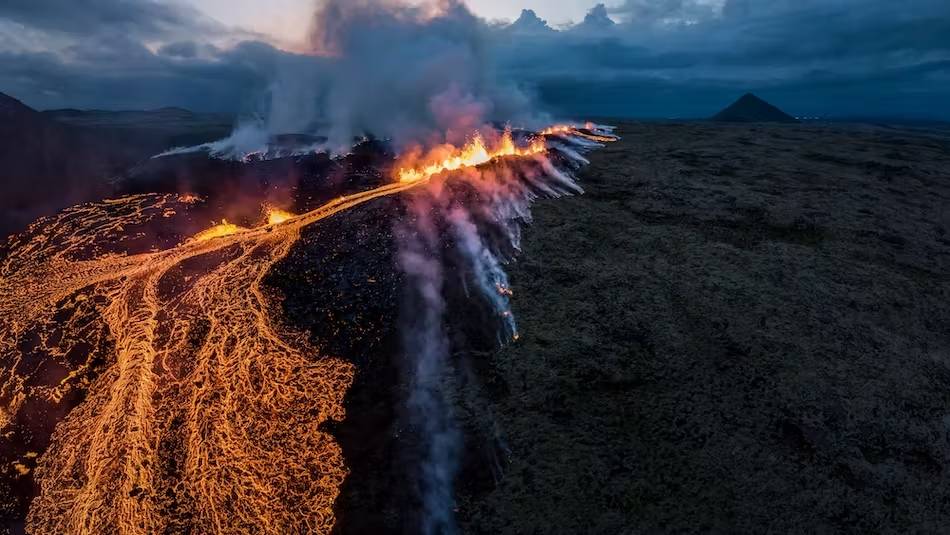A volcanic spectacle is unfolding in Iceland, as the Reykjanes peninsula witnesses the eruption of a volcano for the second time this year and the third time since December. The eruption, which began on February 8, 2024, has unleashed fountains of bright orange molten rock, disrupting life in the southwestern part of the country.
Volcano Eruption in Iceland
The volcanic activity has propelled lava up to 80 meters into the air, creating a stunning yet concerning scene. The eruption has affected the Reykjanes peninsula, with lava crossing roads and impacting the region’s infrastructure. The Blue Lagoon, a renowned geothermal spa, was forced to close as a precautionary measure.

“The lava flow hit thermal-based water pipes, disrupting the supply of hot water to more than 20,000 people,” according to the Source. The disruption prompted the agency to raise its alert level to emergency status, urging households and businesses to conserve electricity.
Iceland Volcano Eruption Today
The volcanic eruption’s reach extended to thermal-based water pipes located just south of Reykjavík, causing concerns about the hot water supply. The Civil Protection Agency highlighted that restoring hot water through an emergency pipeline could take days.
“The lava stream approached the Svartsengi geothermal power plant, raising concerns about potential damage,” mentioned Rikke Pedersen, head of the Nordic Volcanological Center research group in Reykjavík. Protective measures, including the construction of dykes, were implemented to divert the lava flow away from critical infrastructure.
Continuous Threat and Ongoing Precautions
The latest eruption is the sixth outbreak since 2021, underscoring the volatile nature of the Reykjanes peninsula. Scientists are expressing concerns about the possibility of these fissure eruptions continuing for years. Icelandic authorities have initiated the construction of dykes to redirect lava flows, aiming to protect homes and critical infrastructure.
“Despite downgrading the volcanic system’s threat level, authorities have warned of further eruptions as the land continued to rise in the area due to magma accumulating underground,” as reported by Source.
Preparedness and Vigilance
The Reykjanes peninsula, with its six active volcanic systems, remains on high alert. The intense earthquake activity that preceded the eruption served as a reminder of the unpredictable nature of these geological events. While the eruption did not pose an immediate threat to the town of Grindavík, authorities remain vigilant, emphasizing the potential for further eruptions.

“Iceland’s president, Guðni Jóhannesson, posted an image on social media of the view from his residence, with flames and smoke in the distance. ‘This too shall pass,'” stated Jóhannesson, acknowledging the impact on the affected communities.
Volcanic Tourism and Historical Context
Iceland, with its more than 30 active volcanoes, has become a prime destination for volcano tourism. The Reykjanes peninsula, despite experiencing eruptions on and off for decades, offers a unique spectacle for thrill-seekers. Unlike the infamous Eyjafjallajökull, the Reykjanes volcano systems are not trapped under glaciers, making large ash clouds less likely.
“In 2010, ash clouds from eruptions at Eyjafjallajökull in the south of Iceland spread over large parts of Europe, grounding about 100,000 flights and forcing hundreds of Icelanders to evacuate homes,”.


